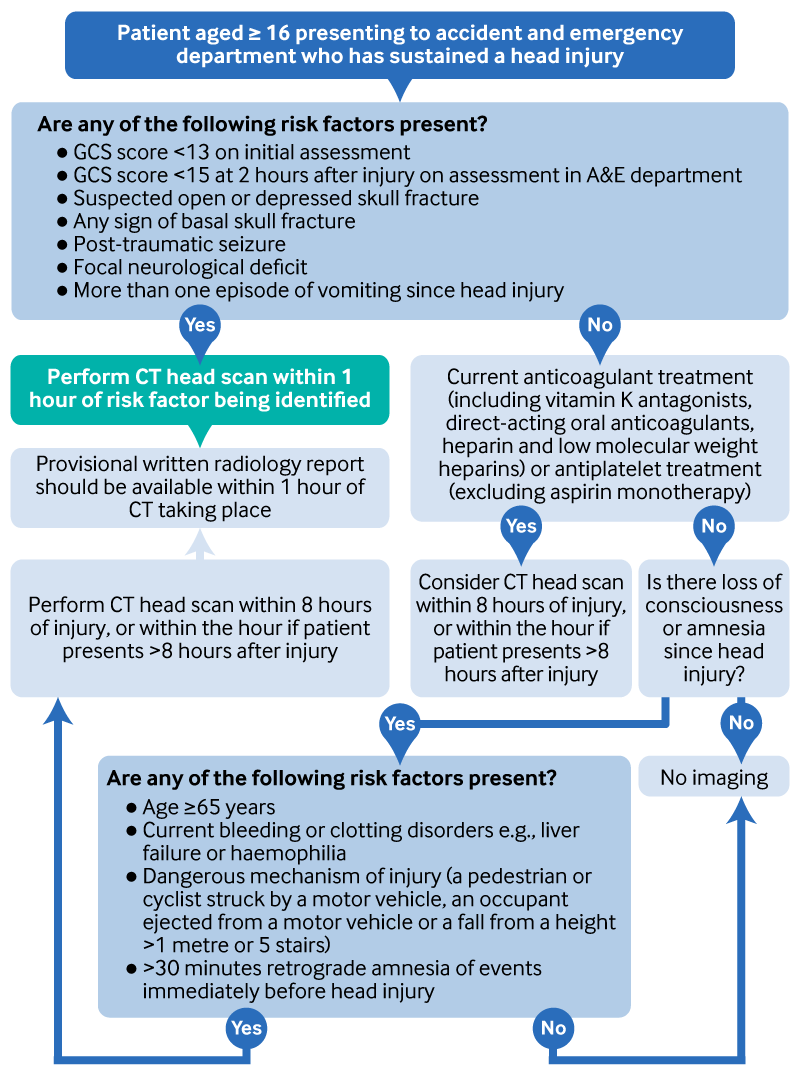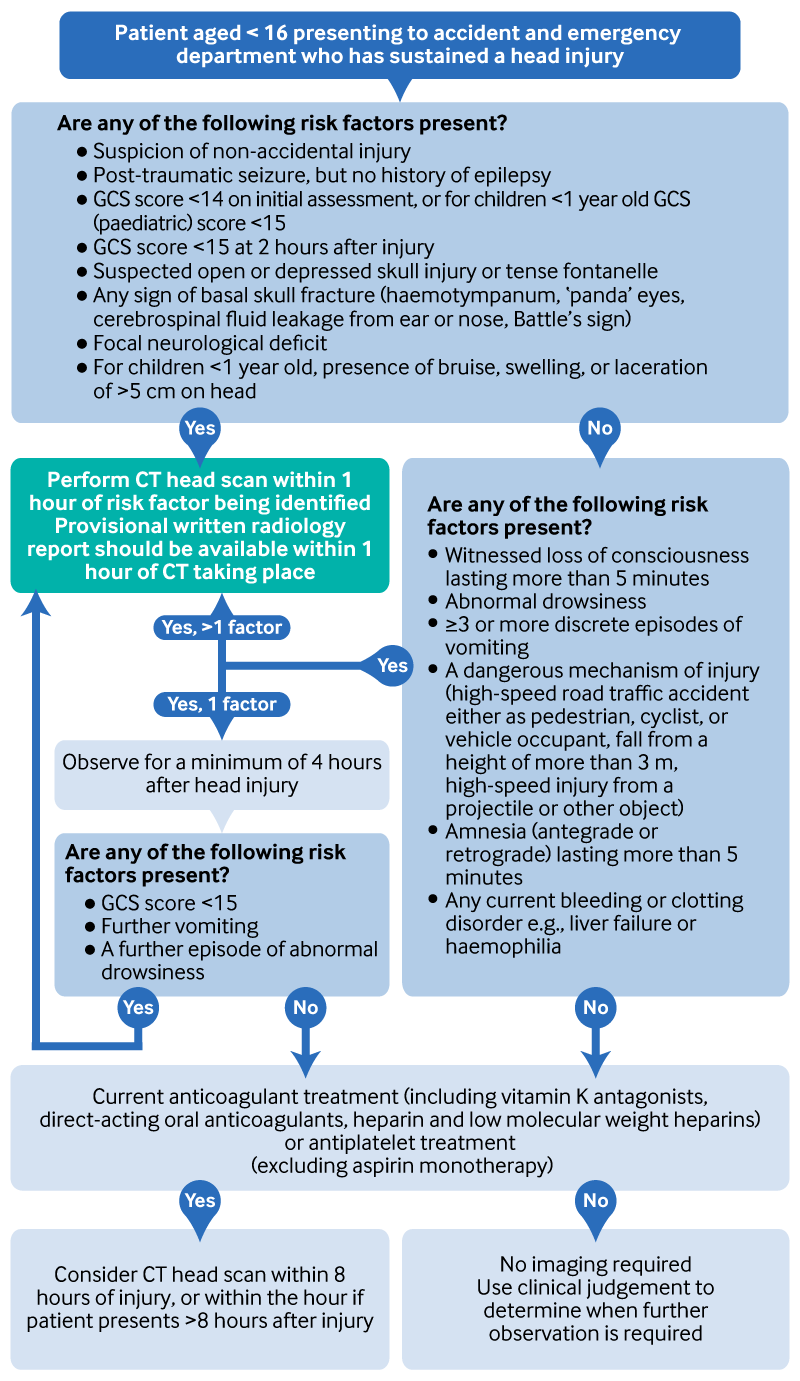Investigations
1st investigations to order
clinical diagnosis
Test
The diagnosis of mild traumatic brain injury is based on careful history-taking and clinical examination. Typically the neurological examination is normal.
Selected patients (including those on anticoagulant treatment) must undergo a CT head scan to exclude an intracranial complication (e.g., bleed). See CT head, below, for more information.
Practical tip
Be vigilant for symptoms and signs of an intracranial haemorrhage, which may include:
Deteriorating consciousness
Confusion
Severe or increasing headache
Repeated vomiting
Seizures
Double or blurred vision.
Result
N/A
Investigations to consider
CT head
Test
Use the criteria listed in the two flowcharts below to carefully identify who to send for a computed tomography (CT) scan and the appropriate timeframe required to exclude serious complications.[42]
Order an urgent (within 1 hour of identifying a risk factor) non-contrast CT head scan if the patient is considered high-risk for brain injury and/or cervical spine injury or has deteriorating neurological status.[42]
If the patient has sustained a head injury and has no other indications for a CT head scan, but is on anticoagulant treatment or antiplatelet treatment (including vitamin K antagonists, direct-acting oral anticoagulants [DOACs], heparin and low molecular weight heparins) or antiplatelet treatment (excluding aspirin monotherapy), consider:[42]
A CT scan within 8 hours of the injury (for example, if it is difficult to carry out a risk assessment or if the patient might not return to the emergency department if they have signs of deterioration)
A CT scan within the hour if the patient presents more than 8 hours after the injury.
Patients who have no other risk factors for brain injury but are taking anticoagulants or antiplatelet treatment (excluding aspirin monotherapy) have an increased risk of bleeding after a head injury.[34][42]
Selection of adults for CT head scan[Figure caption and citation for the preceding image starts]: Selection of adults for CT head scan; GCS = Glasgow Coma Scale; CT = computed tomography; A&E = accident and emergency departmentAdapted from Rajesh S et al. BMJ 2023;381:p1130 [Citation ends].
Selection of children for CT head scan[Figure caption and citation for the preceding image starts]: Selection of children for CT head scan; GCS = Glasgow Coma Scale; CT = computed tomography; A&E = accident and emergency departmentAdapted from Rajesh S et al. BMJ 2023;381:p1130 [Citation ends].
Result
usually normal in mild traumatic brain injury; may show intracranial injury (e.g., bleed, bony injuries)
MRI head
Test
Consider an MRI head scan in patients who after 24 hours of observation have not returned to a Glasgow Coma Scale score of 15 and had a normal CT scan on initial assessment.[42]
Consider susceptibility weighted imaging sequences as these are highly sensitive in detecting microbleeds in traumatic brain injury.[62]
Result
typically normal; may show cerebral contusions, epidural or subdural haematomas
clotting screen
Test
Consider a clotting screen (prothrombin time, partial thromboplastin time, and international normalised ratio) in patients taking anticoagulants.
Result
may be normal; may show coagulopathy
skull x-ray
Test
Consider a skull x-ray in children presenting with suspected non-accidental injury as part of the skeletal survey.[42]
Result
typically normal; may show occult fractures
alcohol screen (breath and blood)
Test
Consider screening patients for alcohol misuse using a breathalyser or a blood alcohol test. Consider imaging if any doubt.
Many mild traumatic brain injuries occur in the context of alcohol consumption, which can make assessment difficult, particularly if the patient is aggressive.
Do not assume a person’s abnormal behaviour or ataxia is due to alcohol or drugs until you have ruled out a significant brain injury.[42]
Result
values in the range of 50 to 100 mg/dL are typically associated with some impairments in memory, co-ordination, and judgement
Use of this content is subject to our disclaimer